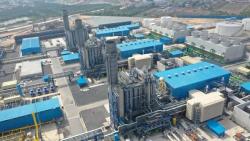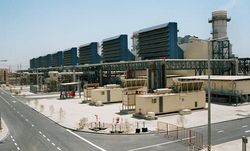
OR WAIT null SECS
© 2024 MJH Life Sciences™ and Turbomachinery Magazine. All rights reserved.
Selecting mechanical seal materials
The wide range of different materials available for mechanical seal faces makes choosing the right face combination seem difficult. It is even more intimidating knowing that the wrong combination of materials may lead to premature seal failure, which in turn leads to significant costs due to replacement of the seal, downtime of the pump, and potential damage caused to the equipment.
This article contains excerpts from the paper, "The Evolution and Application of Mechanical Seal Face Materials," presented by William Dietzel and Jack Vasko of Flowserve in the 2015 Turbomachinery Pump Symposium.
Each mechanical seal requires at least two opposing seal faces. They are typically categorized as either a soft vs. hard or a hard vs. hard combination. The first question to ask when trying to choose the combination is: Do the faces need to have self-lubricating properties?
Soft vs. hard seal face combinations are traditionally used in boundary lubricated and mixed lubrication modes that require self-lubricating properties. The face materials will contact each other and good tribological pairings prevent the seal faces from causing significant damage to each other.
Hard vs. hard faces are typically applied in full fluid film applications that do not necessarily need good tribological properties since the face materials should not come into contact.
The first area of consideration when choosing seal face materials is the product phase (liquid or gas) as it enters and exits the mechanical seal sealing gap.
The three basic classifications are: The sealed product enters and exits the sealing gap as a liquid The sealed product enters and exits the sealing gap as a gas The sealed product enters the sealing gap as a liquid and vaporizes to a gas before it exits.
In the two classifications where the product exits as a gas, the lubrication mode is going to be boundary lubricated or mixed lubricated. This means the face materials selected must have good tribological pairings and are typically a soft vs. hard face combination. The majority of mechanical seals are applied in applications where the product enters and exits the mechanical seal faces as a liquid. The properties of the liquid are important as they have a large impact on determining the lubrication mode of operation. In particular, these types of applications depend on the fluid viscosity to choose the right materials.
Fluid Viscosity
The most common consideration for face selection is the viscosity of the fluid at the working temperature. In general, low viscosity services are more likely to operate in boundary or mixed lubrication environments and thus are most appropriately sealed with a soft vs hard face combination. In higher viscosity fluids, the fluid creates a full fluid film lubrication mode and allows either soft vs hard or hard vs hard material combination. However, certain soft materials, like carbon, are not recommended in higher viscous fluids due to high viscous shearing forces between seal faces which can cause a localized binder failure known as blistering. To avoid this, it is generally practical to apply a hard vs hard face combination in higher viscosity fluids.
Once the properties of the fluid acting between the faces is understood, the lubrication profile can be evaluated using tools such as FEA or by looking at physical evidence from a previously run set of seal faces in the exact application or in similar services. Once the initial seal combination has been chosen using the viscosity, a few other considerations have to be evaluated to ensure the face materials will perform as expected.
In dirty or contaminated applications, the properties and concentrations of suspended solids or crystallization particles becomes critical. Particles that are harder than the face material have a high potential to damage the face. When hard particles are present, face materials with a higher hardness must be selected for both seal faces. Fluids that crystallize or salt as they migrate across the faces or salt on the atmospheric side may also cause significant damage to a soft face.
If soft vs. hard faces are required in these applications, then special considerations should be employed such as selecting seal designs with the process fluid at the outer diameter (OD) of the seal face and applying API Plan 62 external quench at the ID to flush away the particles on the atmospheric side of the seal. If an external quench is not available, then the application should be evaluated with a hard vs. hard face combination, potentially using special features on the faces.
Material Chemical Compatibility
Seal faces are exposed to a wide variety of process fluids. Some of these process fluids are aggressive and will chemically react with individual components of the material such as the base material, the binder, or filler material.
Thermal Considerations
Mechanical seal face materials react differently to the various external and internal temperatures acting on the seal faces. External temperatures from sources such as the pumped fluid, a heating/cooling jacket, or seal cooling piping plans, all influence the overall average face temperature. Internal heat sources such as friction and turbulence can cause locally higher temperatures acting on a portion of the seal faces. These sources can lead to unwanted thermal growth or retraction and potential destruction of the impregnation or binding material. Axial thermal gradients across a seal faces can create uneven thermal expansion in the face leading to detrimental thermal coning.
Different Temperature Effects
Thermal conductivity of the face material is an indication of how the face will effectively dissipate heat generated from the sealing gap to the rest of the face. A lower conductivity material will have a higher temperature gradient and distort the seal face in undesirable ways. The seals in these figures were run under the same operating conditions but only the left hand face material was changed. These show the resin carbon, with the lowest thermal conductivity, kept the heat trapped at the faces causing a higher temperature than the other two faces. The silicon carbide, with the highest conductivity, transferred the heat from the sealing interface, keeping the wear nose temperature the lowest. Even small temperature increases can have a large, indirect influence on the face material by changing the aggressiveness of corrosive fluids, affecting the phase change of the fluid, or decreasing the fluid viscosity.The rotational velocity of the seal face also impacts the choice of seal face materials. Seal face materials in the boundary lubricated or mixed lubricated mode may experience high wear rates if surface velocities are high. Reducing the wear rate may require changing the seal geometry and using material with self-lubricating properties. Higher rotational velocities also increase friction-generated heat between the seal faces and create a larger thermal gradient that causes uneven wear or higher leakage.
Low velocities (less than 350 RPM), when combined with lower pressures, may allow self-lubricating seal face materials to operate in a fully boundary lubricated mode of operation for a significant period of time.
Pressure Limits
High operating pressures can push the limits of the face material’s mechanical properties. For this reason, the materials should be evaluated against their interaction with the location and magnitude of pressure acting on the faces. This evaluation should examine if the strength of the material is sufficient enough to prevent face fractures, especially if the higher pressure is on the inside of the face. The high pressure may require face geometry changes to the face wear nose to reduce the potential for high contact loads. The inherent self-lubricating properties of certain materials often come paired with a lower modulus of elasticity and the potential for significant pressure deformations. These high deformations should be minimized to avoid accelerated or heavy wear and higher than normal leakage.
Trends in Applying Face Material
In recent history, whenever carbon is compatible with the product fluid it has been the general practice to select a hard face material such as silicon carbide or tungsten carbide versus a compliant soft material usually a grade of blister-resistant carbon. Low cost, ability to conform to the opposing face, self-lubrication properties, and low coefficient of friction are just a few of the reasons for carbon’s popularity as a seal face material. However, even with these desirable characteristics, there are limits for this material such as a relatively low modulus of elasticity, poor thermal conductivity and low material hardness of the face. Table 2 compares the application advantages of carbon grades versus hard face options. The search to advance these limitations without sacrificing the excellent tribological properties has been a major driving force in the evaluation and advancement in carbon materials.
Face Features
Even the best material combinations can still experience unwanted performance such as accelerated wear or high leakage. In these cases seal vendors have continued to use these combinations, but apply special considerations to meet the seal’s performance expectations. Special considerations are features added to seal faces intended to change the lubrication mode toward something that achieves the desired performance of the seals. Typical features applied to mechanical seal faces include hydropads, lube grooves, hydrodynamic grooves, waves, or in some cases creating specialized flat-face seal face geometry. The use of these features can also allow application of materials that may not traditionally be used in some services; like a hard vs. hard combination in a flashing hydrocarbon application.



